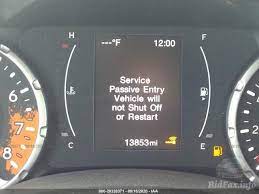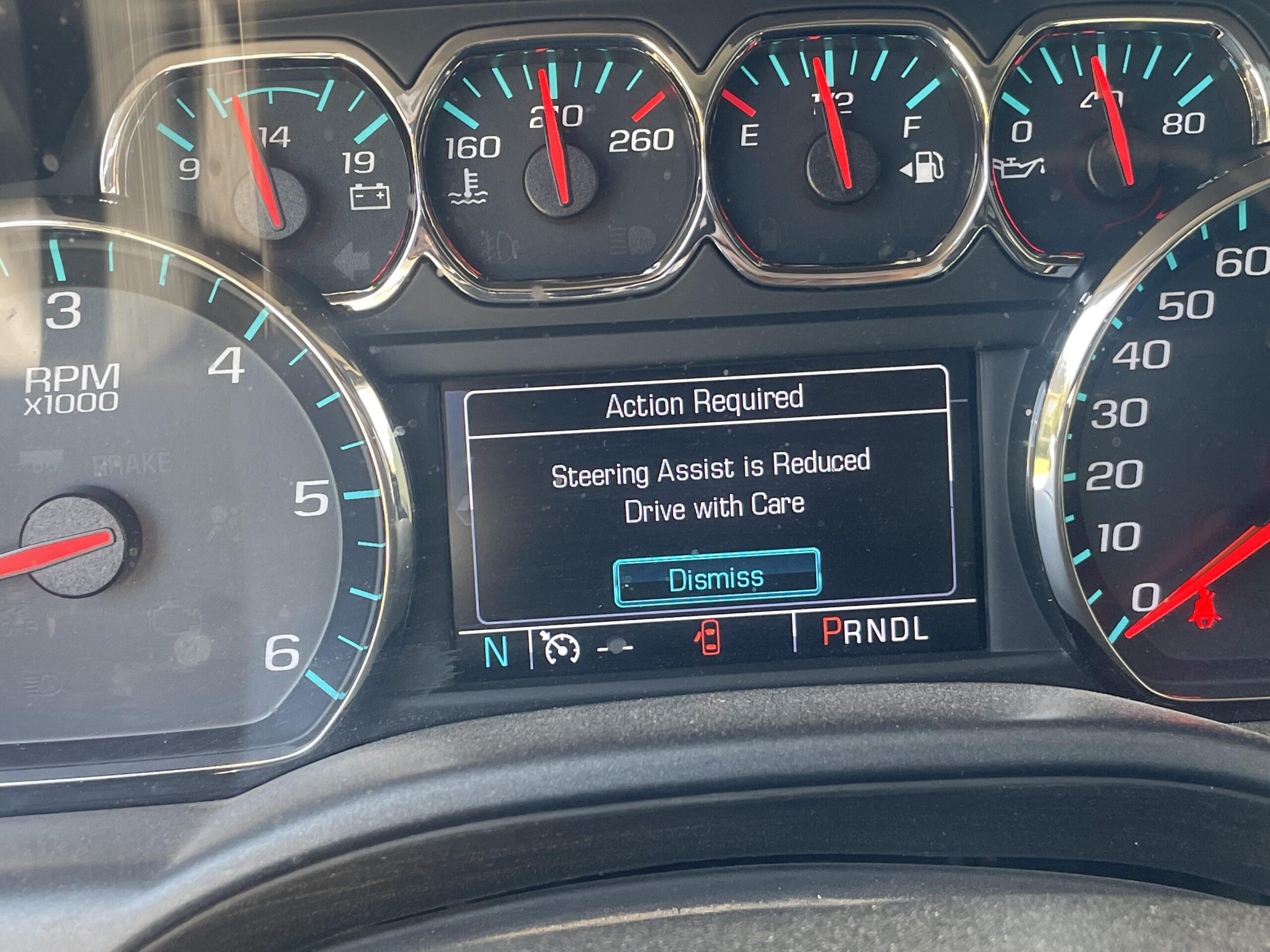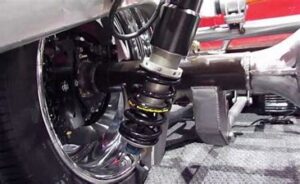Have you ever looked down at the dashboard of your automobile and seen this confusing warning, “Service Passive Entry System”? You wonder what went wrong with your reliable keyless entry system when it seems like your automobile is attempting to communicate with you through a hidden code. Don’t worry; we’re going to solve the puzzle of this message and find out why your car is setting off the alarm.
Modern cars are essential because they have the Service Passive Entry System, which enables keyless entry and ignition. Put more simply, it’s the technology that eliminates the need for you to search for your keys to unlock and start your automobile.
Nevertheless, if there is a glitch in this system, it will promptly transmit a distress signal utilizing the “Service Passive Entry System” message. Your automobile is alerting you to something that isn’t quite right. This post will explain the significance of this mysterious warning, look at some typical causes for its appearance, and offer workable fixes so you may easily get back on the road. Now, let’s solve the puzzle together and arm you with the information you need to confront the Service Passive Entry System notice head-on.
Table of Contents
Decoding The Service Passive Entry System Message In A Car
Although the “Service Passive Entry System” message in your automobile may appear to be a secret code, it indicates that there is a problem with the ignition and keyless entry systems. Put more simply, this system enables you to start and unlock your vehicle without needing to insert a physical key into the ignition. It appears as though your automobile is trying to alert you about a fault in the system that allows for keyless entry when you see this message.

Your automobile will alert you about a malfunctioning gadget or sensor by sending out this message. This technology depends on several devices and sensors. It serves as a nice reminder that the cool technology that makes it so easy to get in and start your car isn’t working properly. That means that when you see the message “Service Passive Entry System,” your car is trying to tell you to get in touch so that you can resume enjoying your smooth, keyless drives. Knowing this helps you realize that it’s not a secret language; rather, it’s your car telling you that it needs some maintenance to keep it functioning properly.
Common Causes Of The Service Passive Entry System Message In Your Car: Unlocking The Mystery
It can be confusing to see the Service Passive Entry System message on your car’s dashboard but don’t worry—let’s examine the typical reasons for this mysterious warning. Restoring the best possible functionality to your car’s ignition and keyless entry system may depend on your ability to comprehend these problems.
1. Broken Key Fobs:
A broken key fob is one of the main causes of the Service Passive Entry System warning. When it comes to interacting with your car’s passive entry system, your key fob is essential. The system may sound an alert if something is wrong or if the battery runs out. The first step in fixing this is to change the key fob batteries and make sure it is properly synchronized with your vehicle.

2. Problems With Sensors:
To identify the key fob’s presence and start the passive entry process, your car uses a network of sensors. This sensor can cause the Service Passive Entry System notice to appear if it malfunctions. Examine your car for any obvious damage, or refer to the user manual for information on where the sensors are located to check for sensor problems.
3. Low Power Output:
The batteries in your automobile and key fob are essential to the passive entry system’s operation. Both components’ low battery levels have the potential to cause communication problems and set off the alert. To stop the Service Passive Entry System notice from frequently occurring, check your batteries regularly and replace them as needed.
4. Interference By Electronics:
There are many electronic signals in our modern, technologically evolved environment. The passive entry system may occasionally experience interference from other devices or radio frequencies. To lessen this problem, park your automobile away from probable sources of interference, such as strong radio broadcasts or electronic equipment.

5. Corrupted Wiring:
Over time, the complex wiring that holds the passive entry system’s many components together may sustain damage. The wiring may become compromised due to physical wear and tear or exposure to extreme weather, which could result in communication problems. Check wiring frequently for indications of damage, and take quick action to fix any problems.
As a result, problems with key fobs, sensors, battery levels, electrical interference, or broken wiring frequently cause the Service Passive Entry System notice. Through the identification and resolution of these prevalent causes, you can effectively manage this automobile dilemma and guarantee the uninterrupted operation of your vehicle’s passive entry system.
Solutions To Address The Service Passive Entry System Message In Your Car
It can be confusing to see the Service Passive Entry System notification in your automobile, but there are ways to fix it. Let’s investigate doable actions to diagnose and fix this problem so that driving is stress-free and seamless.
1. Examine And Swap Out The Key Fob Battery:
A low-key fob battery is frequently the cause of the Service Passive Entry System notification. To start, open the key fob’s battery box and take out the old one. To ensure that your car’s passive entry system communicates with you effectively, make sure the key fob battery is healthy and charged.

2. Check The Health Of The Car Battery:
The warning from the Service Passive Entry System may occasionally indicate a low car battery. Inspect your automobile batteries regularly and replace it if necessary. The mystery alert may be caused by communication problems between the key fob and the vehicle, which might be brought on by a low battery.
3. Link Key Fob To Vehicle:
There is a chance that the key fob will become out of sync with the vehicle’s passive entry system. To learn how to resynch the key fob, consult the user manual that came with your vehicle. Frequently, the system can be reset with this easy action, which also removes the Service Passive Entry System notice.
4. Examine The Wiring And Sensors:
Damaged wiring or faulty sensors can prevent the passive entry system from operating as intended. Examine the sensors surrounding the vehicle doors and the wiring that is attached to the entry system visually. Keep an eye out for any indications of wear, corrosion, or damage, and take appropriate action.

5. Look For Expert Help:
It is suggested to seek professional assistance if the aforementioned measures fail to resolve the issue. Speak with a licensed mechanic or the service department of the manufacturer of your vehicle. They can find and address more complicated problems with the passive entry system because they have the knowledge and resources to do so.
Therefore, there are several steps involved in resolving the Service Passive Entry System notification, ranging from basic maintenance such as changing the batteries in your key fob to expert assistance if necessary. You can make sure that your car’s passive entry system works flawlessly and gives you the security and convenience it was intended to by being proactive and taking care of possible problems. You’ll soon be back on the road worry-free if you keep these fixes in mind.
Conclusion:
In conclusion, the message from the Service Passive Entry System may appear to be a car riddle, but with the right information, it may be simply answered. Understanding it and addressing frequent issues head-on will help you maintain your car’s smooth operation. Recall that a minor issue need not result in a breakdown. However, quick fixes like checking the batteries in your key fob or calling an expert can quickly get you back on the road. Therefore, the next time your automobile displays this enigmatic warning, don’t panic. Deciphering and resolving it is essential to guaranteeing a trouble-free trip. Drive with self-assurance, knowing that you’ve solved the puzzle!



